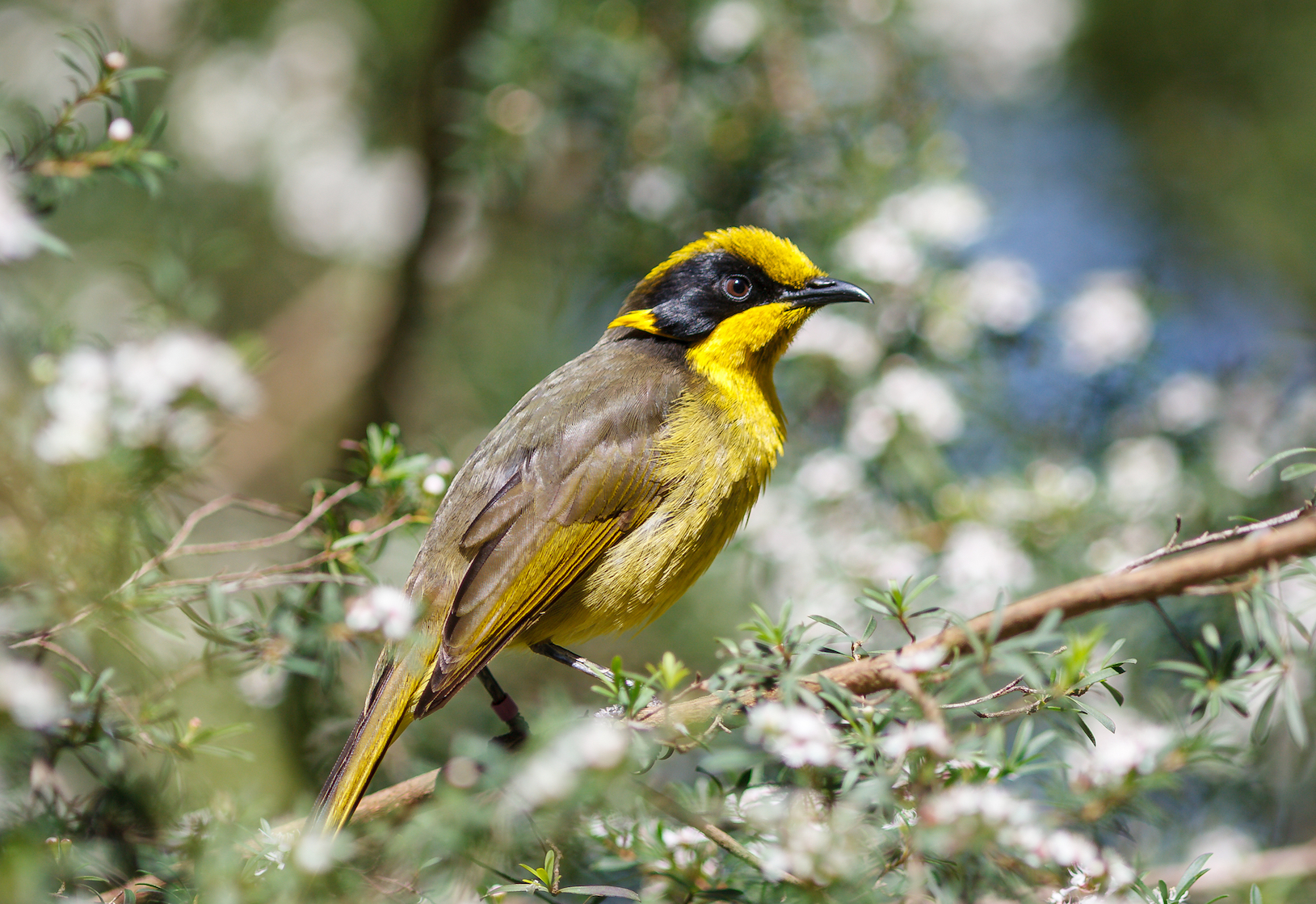
State Bird of Victoria (Australia) Helmeted honeyeater Symbol Hunt
The Helmeted Honeyeater belongs to family Meliphagidae, an iconic Australo-Papuan group that evolved around 20 million years ago. Genus Lichenostomus, as currently recognized, split from other honeyeaters about 8 million years ago [4]. The State of Victoria, Australia, made the beautiful Helmeted honeyeater Victoria's bird emblem in 1971 [5].
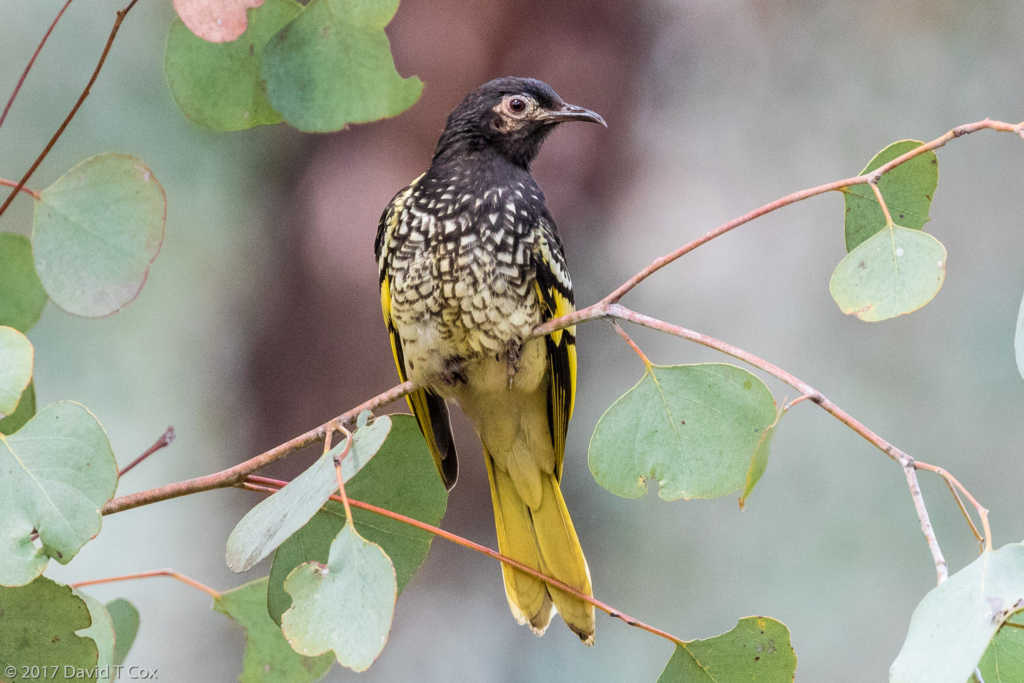
Regent Honeyeater, Chiltern NP, Victoria, Australia Dave's Travelogues
The regent honeyeater, once abundant in south-eastern Australia, is now listed as critically endangered; just 300 individuals remain in the world. "They don't get the chance to hang around with.
Regent Honeyeater Endangered Species Supporters Australia Protect Australian Wild Life And
The Andrews Labor Government is boosting Victoria's critically endangered Helmeted Honeyeater population, with 20 more birds released into the wild as part of conservation efforts to save the species. Minister for Environment Ingrid Stitt today visited the Yarra Ranges National Park to participate in the wild release of the birds, which are one of the state's faunal emblems.
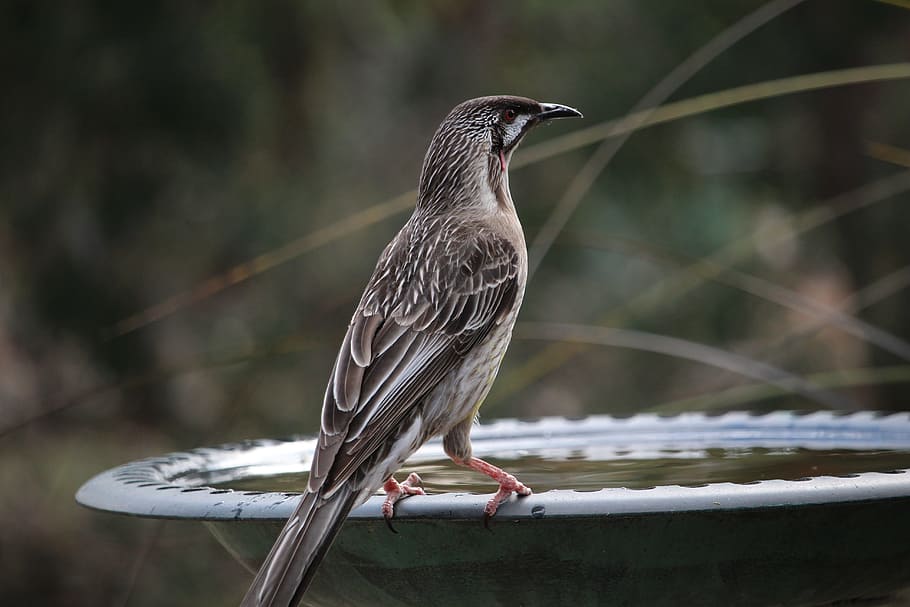
HD wallpaper Red Wattlebird, Honeyeater, australian birds, australian honeyeaters Wallpaper Flare
The bird emblem of Victoria, the Helmeted Honeyeater (or HeHo for short) is a critically endangered, endemic sub-species of the Yellow-tufted Honeyeater. Their current wild range is restricted to two locations with streamside swamp forest in the Yarra Valley, east of Melbourne. The birds have distinctive yellow, black and olive body feathers.
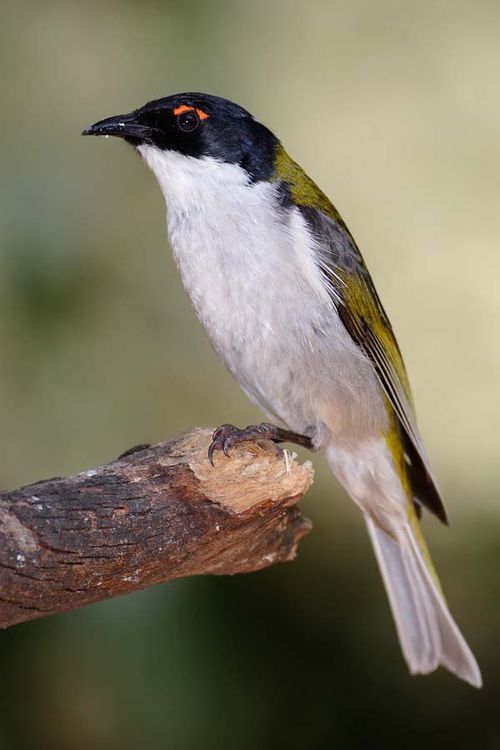
Whitenaped Honeyeater (Melithreptus lunatus)
The Striped Honeyeater (25 cm) is a citizen of Australia's eastern inland arid forests and woodlands. Feeds on insects, seeds and fruit as well as nectar. Singing Honeyeaters (22 cm) are seen Australia wide. They inhabit the woodlands and scrublands feeding on berries, nectar and insects.
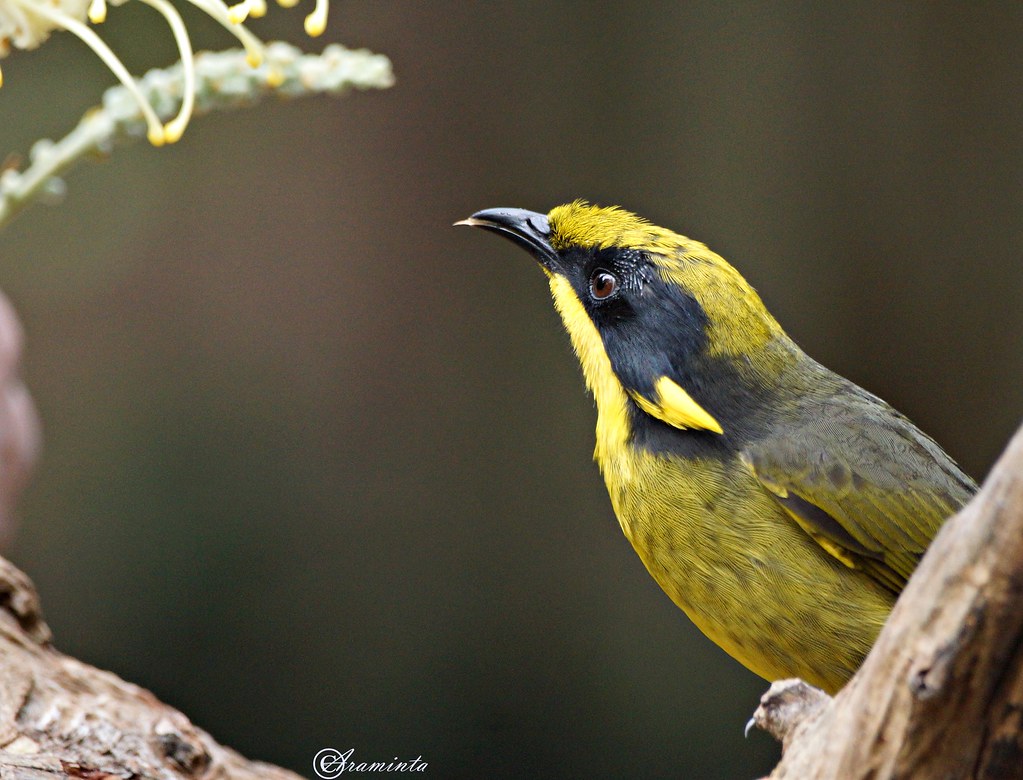
Yellowtufted Honeyeater BIRDS in BACKYARDS
The Critically Endangered Regent Honeyeater is a medium-sized honeyeater with striking black and yellow plumage.
Yellowcheeked Honeyeater (Cape Paterson, Victoria, Australia) from my first ever day taking
The Regent Honeyeater Listed under the Victorian FFG Act 1988 as Xanthomyza phrygia but now referred as Anthochaera phrygia is a medium sized bird of extraordinary beauty that has been driven almost to the brink of extinction by indiscriminate land clearing.It has no close relatives and is the only member of its genus. Traditionally thought to be related to highland Papuan honeyeaters of the.

Yellowfaced Honeyeater (Birds of the Royal Botanic Gardens Victoria Cranbourne
The helmeted honeyeater also joins a very small set of birds that have both a chromosome-length genome and a genetic map. This research has been published today in the open science journal.
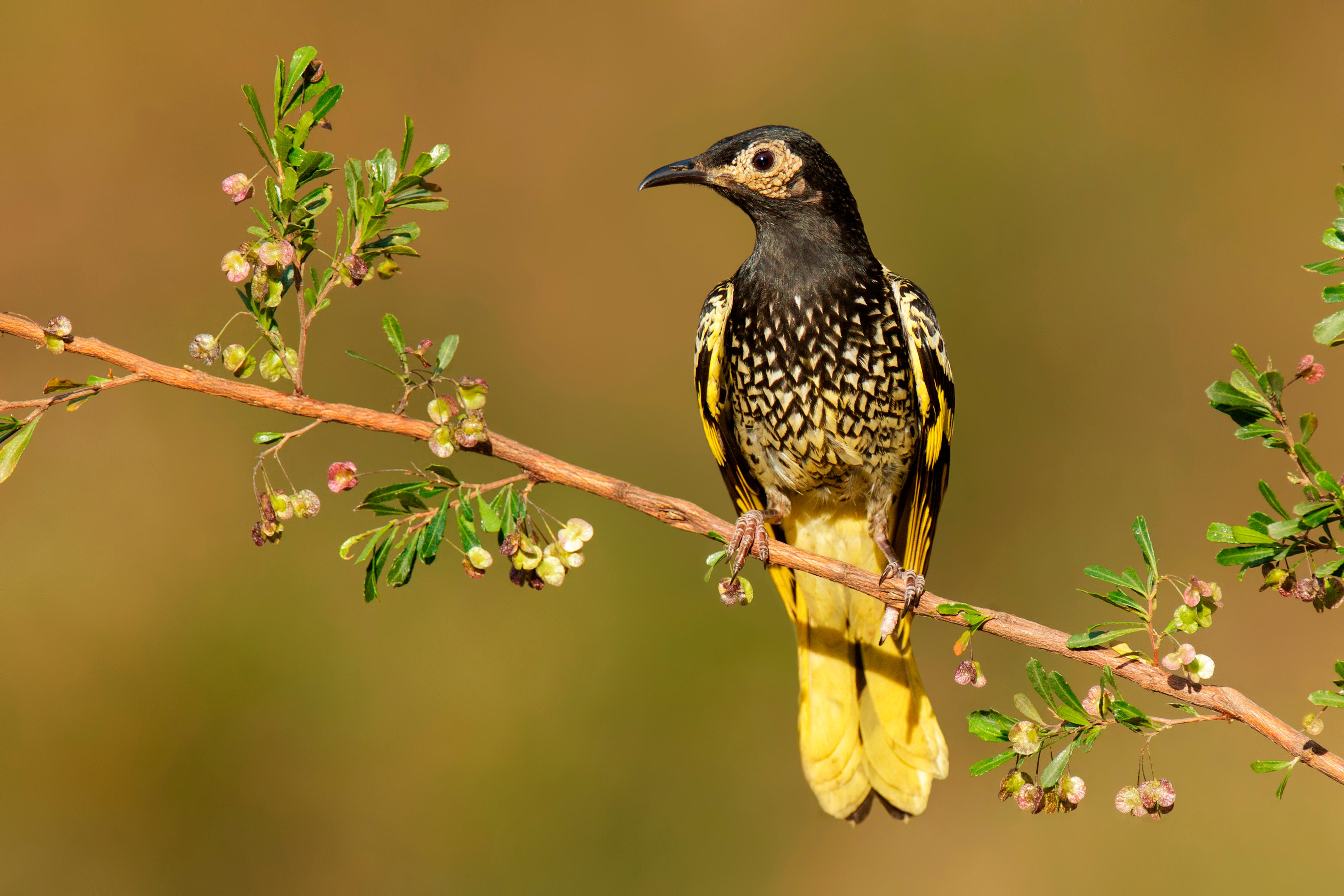
Save the beautiful regent honeyeater
Honeyeaters are a diverse group of Australian birds belonging to the family Meliphagidae. One of their special characteristics is a 'brush-tipped' tongue, with which they take up nectar from flowers. However, nectar is only one of their foods. Most honeyeaters also eat insects, and some eat more insects than nectar.

Australian Honeyeaters Australia's Wonderful Birds
Species information This subspecies of the Yellow-tufted Honeyeater is found within a small portion of riparian and swamp forests in the Yellingbo Nature Conservation Reserve to the east of Melbourne. These birds are striking, with yellow, black and olive plumage and a distinctive tuft of feathers on their forehead.

Helmeted Honeyeater. This is one of Australia's rarest and most endangered birds. Healesville
Medium-sized honeyeater found in dry forests of northeastern Victoria and seasonally in small numbers up the eastern coast to around Brisbane. Critically endangered and the focus of a recovery program. Unmistakable, beautiful bird with black head, large bare warty red eye patch, and an elaborate scaly white-yellow-black pattern on back, wings, and belly. Tail is black with broad yellow corners.

Yellowtufted Honeyeater, Chiltern NP, Victoria, Australia Dave's Travelogues
Scientific name Myzomela sanguinolenta Bird family honeyeaters and chats Status Least Concern (LC) Listen to audio Once the Scarlet Honeyeater is spied it is not easily forgotten, especially the males with their brilliant combo of red, white and black.
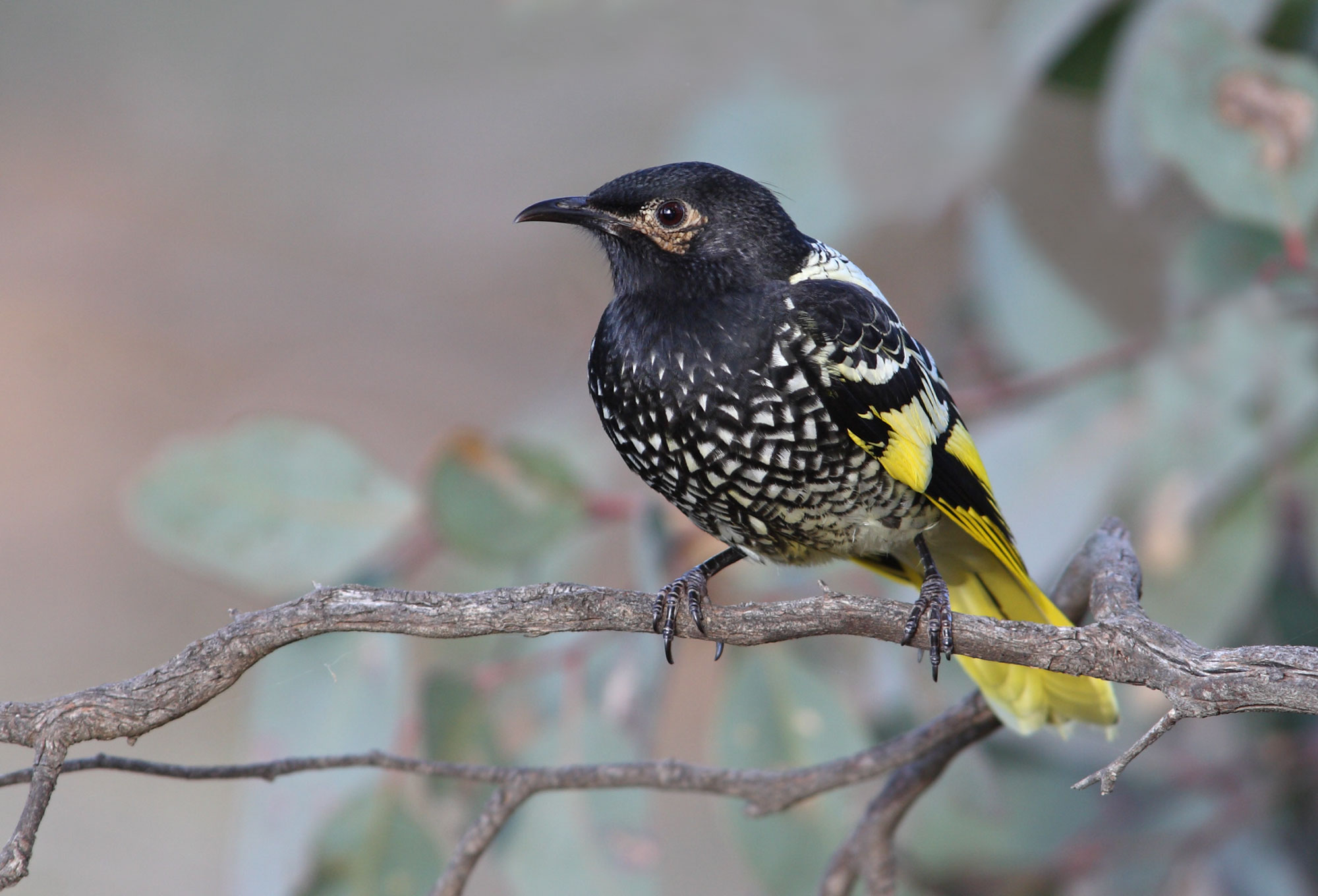
Regent Honeyeater Melbourne Museum
The Blue-faced Honeyeater is one of the first birds heard calling in the morning, often calling 30 minutes before sunrise.
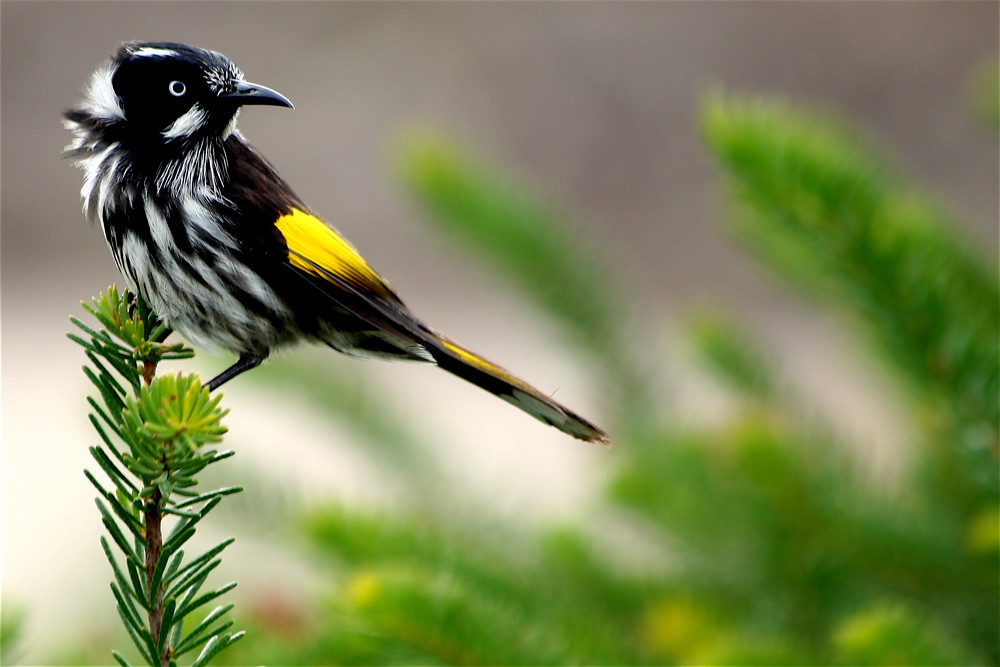
New Holland Honeyeater Victoria, Australia Master Pip 1 Flickr
7 September 2021 The release to a new location in Yarra Ranges National Park, which includes captive-bred birds from Healesville Sanctuary and wild birds from nearby Yellingbo, marks a major milestone for the Helmeted Honeyeater Recovery Program.

Whiteplumed honeyeater Serendip Bird Sanctuary Victoria… Flickr
The Regent Honeyeater is a highly mobile species, following flowering eucalypts through box ironbark open-forest and woodland areas. Their breeding events correspond with the flowering of food sources. Threats Regent Honeyeater populations have declined since the mid twentieth century.

Victoria’s bird emblem Helmeted Honeyeater
Photos and facts about the Honeyeaters of Australia